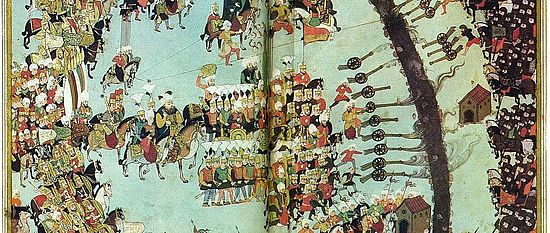
Sabrina RospertEntangled Warfare. The Circulation of Military Knowledge between Europe and the Ottoman Empire (1453-1718)
For too long, scholars of both European and Ottoman early modern history have focused on an alleged European superiority in matters of warfare, arguing that from the late 16th century onwards, the Ottoman military lagged behind its Western and Central European rivals. Other, more recent studies, relying on observations made by contemporaries like the Habsburg diplomat Ogier Ghislain de Busbecq (1522-1592), have not only called into question any major tactical or technological advantage of European armies, but have also highlighted the advantages of Ottoman over Western military organization. Both approaches share a common interest in comparative approaches: Due to the nearly undisputed "military revolution" paradigm, comparisons of the two conflict parties' military power in the age of the Ottoman wars in Europe are difficult to overcome.
In contrast, this study starts from the assumption that the ongoing conflicts between the Ottoman Empire and European Christendom did not cement separate military cultures, but facilitated the exchange of ideas, innovations, and technologies in the realm of war.
Drawing on the expanding research on Europe and the Ottoman territories as an entangled space, the study aims to trace the circulation of military knowledge through the Eurasian continent from the fall of Constantinople in 1453 up to the signing of the peace treaty of Passarowitz in 1718. It does so by tracking down the European and Ottoman agents of this knowledge transfer – mainly engineers, military leaders and their subordinates, specialized craftsmen like armorers or Pixnmeister as well as travelers and “transimperial” subjects in general; their handwritten as well as printed testimonies stored in different European and Ottoman archives provide the basis for the analysis.
